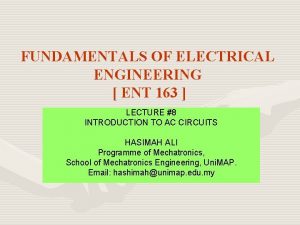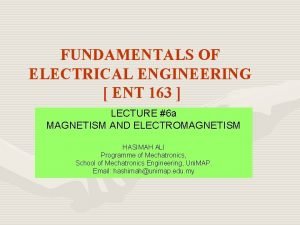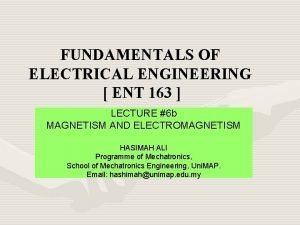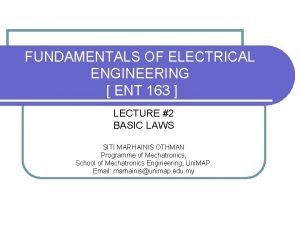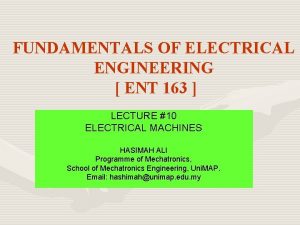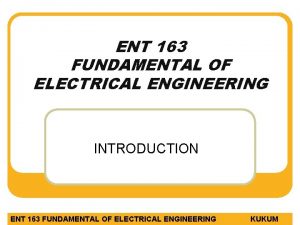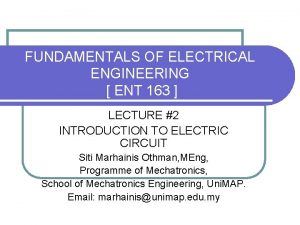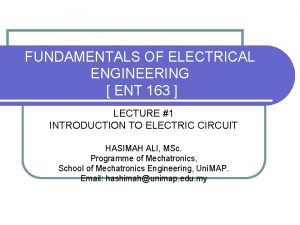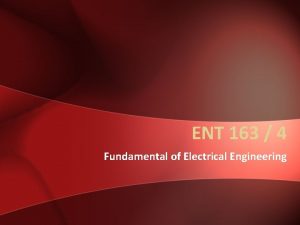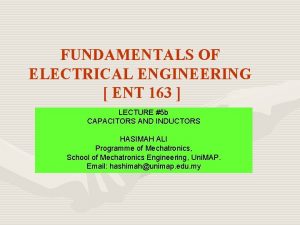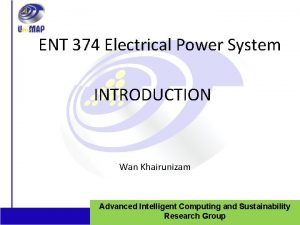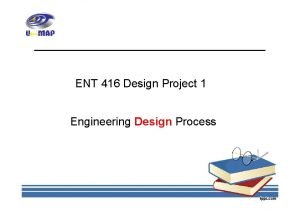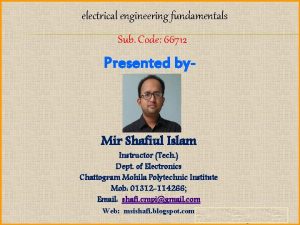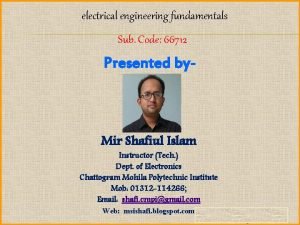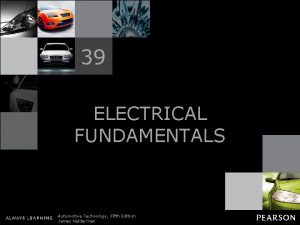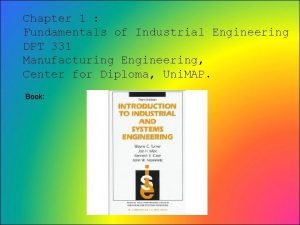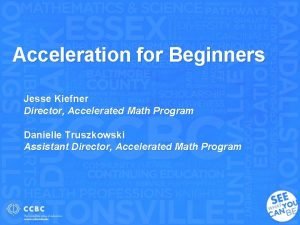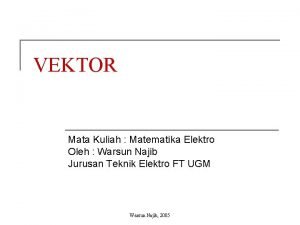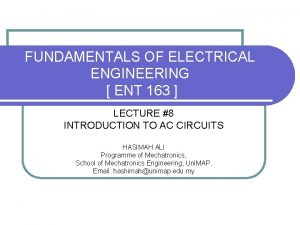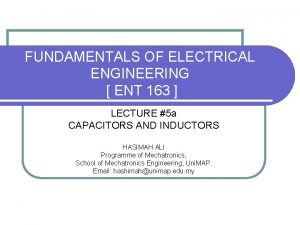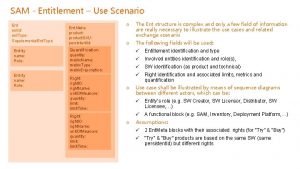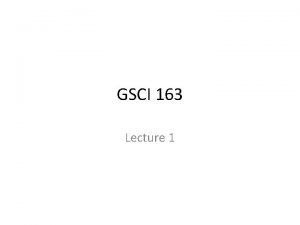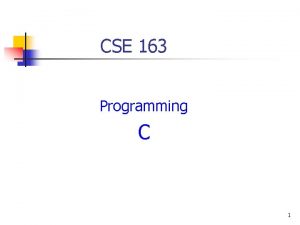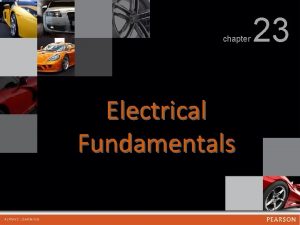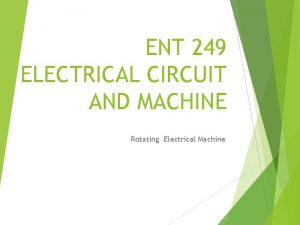FUNDAMENTALS OF ELECTRICAL ENGINEERING ENT 163 LECTURE 10
![FUNDAMENTALS OF ELECTRICAL ENGINEERING [ ENT 163 ] LECTURE #10 ELECTRICAL MACHINES HASIMAH ALI FUNDAMENTALS OF ELECTRICAL ENGINEERING [ ENT 163 ] LECTURE #10 ELECTRICAL MACHINES HASIMAH ALI](https://slidetodoc.com/presentation_image_h/37a57a469a0711430970e7ce6fe5ab20/image-1.jpg)





































- Slides: 38
![FUNDAMENTALS OF ELECTRICAL ENGINEERING ENT 163 LECTURE 10 ELECTRICAL MACHINES HASIMAH ALI FUNDAMENTALS OF ELECTRICAL ENGINEERING [ ENT 163 ] LECTURE #10 ELECTRICAL MACHINES HASIMAH ALI](https://slidetodoc.com/presentation_image_h/37a57a469a0711430970e7ce6fe5ab20/image-1.jpg)
FUNDAMENTALS OF ELECTRICAL ENGINEERING [ ENT 163 ] LECTURE #10 ELECTRICAL MACHINES HASIMAH ALI Programme of Mechatronics, School of Mechatronics Engineering, Uni. MAP. Email: hashimah@unimap. edu. my

CONTENTS • • • MUTUAL INDUCTANCE INTRODUCTION TO TRANSFORMER STEP-UP AND STEP-DOWN TRANSFORMER LOADING THE SECONDARY WINDING IDEAL TRANSFORMER DC GENERATOR

MUTUAL INDUCTANCE When a second coil is placed very close to the first coil so that the changing magnetic lines of force cut through the second coil, the coils are magnetically coupled and a voltage is induced. When two coils are magnetically coupled, they provide electrical isolation because there is no electrical connection between them, only magnetic link.

MUTUAL INDUCTANCE • The amount of voltage induced in the second coil as a result of the current in the first coil is dependent on the mutual inductance. • The mutual inductance is established by the inductance of each coil (L 1 and L 2) and by the amount of coupling k between the two coils. • Mutual inductance is the ability of one inductor to induce a voltage across a neighboring inductor, measured in Henrys (H). • To maximize coupling, the two coils are wound on the same core. Coefficient of Coupling = the flux ( lines of force) produced by the primary linking of secondary =the total flux produced by the primary

MUTUAL INDUCTANCE Formula for Mutual Inductance �� Example 1

INTRODUCTION TO TRANSFORMER q A transformer is a stationary electric machine which transfers electrical energy (power) from one voltage level to another voltage level. q Unlike in rotating machines, there is no electrical to mechanical energy conversion.

INTRODUCTION TO TRANSFORMER The Basic Transformer A basic transformer is an electrical device constructed of two coils of wire (windings) magnetically coupled to each other so that there is a mutual inductance for the transfer of power from one winding to the other. A schematic of a transformer

INTRODUCTION TO TRANSFORMER • The source voltage is applied to the primary winding, and the load is connected to the secondary winding. • The primary winding is the input winding, and the secondary winding is the output winding. • There are three general categories of core material: air, ferrite, and iron. Schematic symbols based on type of core.

INTRODUCTION TO TRANSFORMER The amount of magnetic coupling between the primary winding and the secondary winding is set by the type of core material and by the relative positions of the windings. Transformers with cylindricalshaped cores. Iron-core transformer construction with multilayer windings.

INTRODUCTION TO TRANSFORMER Some common types of transformers. Turns Ratio Function of transformer – stepping up or stepping down ac voltage or currents

Example 2 A transformer primary winding has 100 turns, and the secondary winding has 400 turns. What is the turns ratio? Solution:

INTRODUCTION TO TRANSFORMER How does a transformer work? • • An AC current in the primary coil creates a changing magnetic field in the iron core. This changing magnetic field induces a current in the secondary coil as described by Faraday’s Law. Primary voltage Iron core

INTRODUCTION TO TRANSFORMER Direction of winding The direction of the windings determines the polarity ofthe voltage across the secondary winding (secondary voltage) with respect to the voltage across the primary winding (primary voltage).

INTRODUCTION TO TRANSFORMER Direction of winding Phase dots indicate relative polarities of primary and secondary voltages.

STEP-UP AND STEP DOWN TRANSFORMERS What is a step-up transformer? • A transformer in which the secondary voltage is greater than the primary voltage. • The amount that the voltage is stepped up depends on the turns ratio.

STEP-UP AND STEP DOWN TRANSFORMERS Applications Power plants to increase the generated voltage and send it to high voltage transmission lines. To increase the voltage in order to get higher electrical field (TVs, Radar and Microwaves, …)

Example 3 The transformer in Figure has a turns ratio of 3. What is the voltage across the secondary winding? Solution: Note that the turns ratio of 3 is indicated on the schematic as 1: 3. meaning that there are three secondary turns for each primary turn.

STEP-UP AND STEP DOWN TRANSFORMERS What is a step-down transformer? • A transformer in which the secondary voltage is less than the primary voltage. • The amount by which the voltage is stepped down depends on the turns ratio.

STEP-UP AND STEP DOWN TRANSFORMERS Applications Electrical distribution networks (to reduce the voltage from medium voltage (10, 000 V – 30 000 V) to low voltage (110 V – 208 V) for different customers). Distribution Transformers used by Hydro companies to deliver the electric ener

STEP-UP AND STEP DOWN TRANSFORMERS Application s To reduce plug voltage (110 V) to lower voltages in electronic. Equipments/ circuits such as radio, phone, laptop, adaptors, …

Example 4 The transformer in Figure has a turns ratio of 0. 2, What is the secondary voltage? Solution:

LOADING THE SECONDARY WINDING When a resistive load is connected to the secondary winding of a transformer, the relationship of the load (secondary) current and the current in the primary circuit is determined by the turns ratio. • Thus, for a step-up transformer, in which n is greater than 1, the secondary current is less than the primary current. • For a step-down transformer, n is less than 1, and Isec is greater than Ipri • When the secondary voltage is greater than the primary voltage, the secondary current is lower than the primary current and vice versa.

Example 5 The two transformers in Figure have loaded secondary windings. If the primary current is 100 m. A in each case. what is the load current? SOLUTION

IDEAL TRANSFORMER • Ideal transformer is one with perfect coupling (k=1). • Ideal transformer is a unity-coupled, lossless transformer in which the primary and secondary coils have infinite self – inductances. • Iron core transformers are close approximation to ideal transformer. • These are used in power systems and electronics. Ideal Transformer Circuit Symbol for Ideal Transformers

IDEAL TRANSFORMER Relating primary and secondary quantities in an ideal transformer. The turns ratio or transformation ratio:

Example 5 1. A transformer primary winding has 100 turns, and the secondary winding has winding 400 turns. What is the turns ratio? 2. A certain transformer has a turn ratio of 10. If Npri = 500, what is Nsec?

Example 5 1. A transformer primary winding has 100 turns, and the secondary winding has winding 400 turns. What is the turns ratio? n = Nsec / Npri = 400/100 = 4 2. A certain transformer has a turn ratio of 10. If Npri = 500, what is Nsec? n = 10, Npri = 500 Nsec = n X Npri = 10 X 500 = 5000

IDEAL TRANSFORMER q For an ideal transformer , the complex power (VA) in the primary winding is equal to the secondary: S 1 = V 1 I 1 = V 2 I 2 = S 2 where, S 1= power in the primary winding S 2=power in secondary winding (This shows that the complex power supplied to the primary is delivered to the secondary without loss, since ideal transformer is lossless).

DC GENERATOR

DC GENERATOR q Simplified dc generator. Consist of: • A single loop of wire – rotates in a permanent magnetic field • Commutator – split-ring arrangement, connected at each end of the loop. • Brushes – the fixed contacts that connects wire to external circuit.

DC GENERATOR When driven by an external mechanical force – the wire loop rotates through the magnetic field and cuts through the flux lines at varying angles. End view of wire loop cutting through the magnetic field. At position A – the loop of wire is effectively moving parallel with the magnetic field – the rate at which it is cutting through the magnetic flux lines is zero.

DC GENERATOR • As the loop moves from position A to position B – the loop cuts through the flux lines at an increasing rate. • At position B, it is moving effectively perpendicular to the magnetic field and thus is cutting through a maximum number of lines. • As the loop rotates from position B to position C, the rate at which it cuts the flux lines decreases to minimum (zero) at C. • From position C to position D, the rate at which the loop cuts the flux lines increase to a maximum at D and then back to a minimum again at A. End view of wire loop cutting through the magnetic field.

DC GENERATOR Recall from Faraday’s law: 1. When a wire moves through a magnetic field, a voltage is induced. 2. According to Faraday’s Law – amount of induced voltage is proportional to the number of loops turns in the wire and the rate at which it is moving with respect to the magnetic field. 3. The angle at which the wire moves with respect to the magnetic flux lines determines the amount of induced voltage because the rate at which the wire cuts through the flux lines depends on the angle of motion.

DC GENERATOR Operation of Basic DC Generator 1. Assume that the loop is in its instantaneous horizontal position, so the induced voltage is zero. 2. As the loop continues in its rotation, the induced voltage builds up to a maximum at position B. as shown in part (a) of the figure. 3. Then, as the loop continues from B to C, the voltage decreases to zero at position C, as shown in part (b).

DC GENERATOR • During the second half of the revolution , the brushes switch to opposite commutator sections, so the polarity of the voltage remains the same across the output. • Thus, as the loop rotates from position C to position D and then back to position A, the voltage increases from zero at C to a maximum at D and back to zero at A.

DC GENERATOR Induced voltage over three rotations of the wire loop in the dc generator. When more wire loops are added, the voltage induced across each loop are combined across the output – resulting a smoother dc voltage The induced voltage for a two-loop generator. There is much less variation in the induced voltage.

DC GENERATOR Operation of Basic DC Generator

Further reading… 1. Principles of Electric Circuits; Conventional Current version, 8 th Edition, Pearson, Floyd. 2. Fundamental of Electric Circuits. 2 nd Edition, Mc. Graw. Hill, Alexander & Sadiku. 3. Electrical Machines, Drives, And Power System, 6 th Edition, Pearson Prientice Hall, Wildi.
 Ent163
Ent163 Ent 163
Ent 163 Ent 163
Ent 163 Ent.163
Ent.163 Ent 163
Ent 163 Ent163
Ent163 An energy source forces a constant current of 2a
An energy source forces a constant current of 2a Ent.163
Ent.163 Ent.163
Ent.163 163 ent
163 ent Ent 163
Ent 163 Product planning
Product planning Electrical engineering fundamentals 66712 pdf
Electrical engineering fundamentals 66712 pdf Electrical engineering fundamentals 66712 pdf
Electrical engineering fundamentals 66712 pdf Lesson 5: electrical nonmetallic tubing (ent)
Lesson 5: electrical nonmetallic tubing (ent) 01:640:244 lecture notes - lecture 15: plat, idah, farad
01:640:244 lecture notes - lecture 15: plat, idah, farad Chapter 39 electrical fundamentals
Chapter 39 electrical fundamentals Design principles in software engineering
Design principles in software engineering Fundamentals of industrial engineering
Fundamentals of industrial engineering Pasal 163 is
Pasal 163 is Pasal 163 is
Pasal 163 is Apa itu pluralisme
Apa itu pluralisme Pasal 163 is
Pasal 163 is Pasal 163 is
Pasal 163 is 163 mk
163 mk Mc.163.com download
Mc.163.com download Nablwp
Nablwp Youcat 163
Youcat 163 Doctrine and covenants 163
Doctrine and covenants 163 Cs 175 uci
Cs 175 uci State finance law 163
State finance law 163 Gratido
Gratido Math 163 ccbc
Math 163 ccbc Money-time relationship and equivalence
Money-time relationship and equivalence Software engineering lecture notes
Software engineering lecture notes Foundation engineering lecture notes
Foundation engineering lecture notes Engineering ethics lecture notes
Engineering ethics lecture notes Pengurangan vektor
Pengurangan vektor George washington university electrical engineering
George washington university electrical engineering
